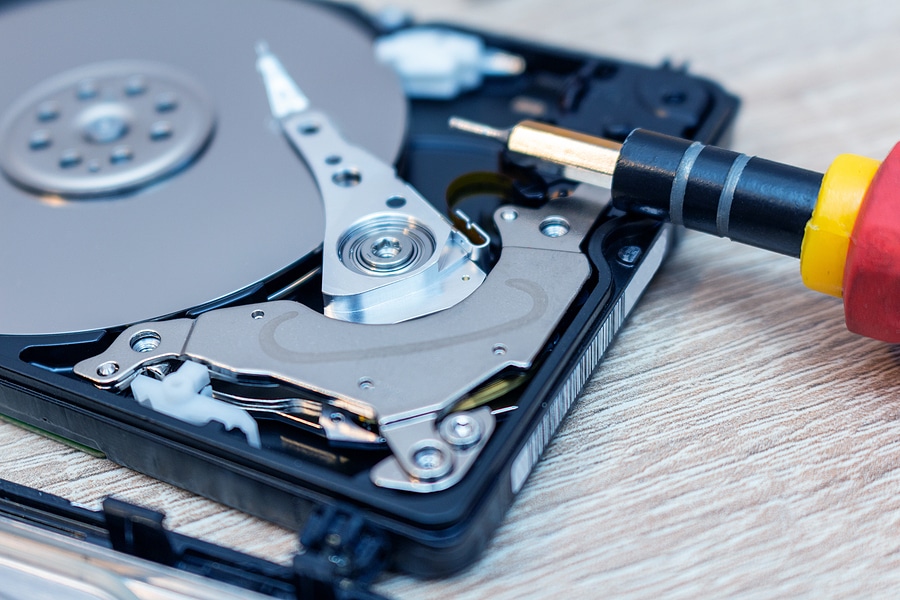5 Common Mistakes Made with DIY Hard Drive Destruction

Though the majority of data breaches are incited by cyber attackers that pierce network defenses or exploit the human element, sheer negligence still causes one out of every four data breaches, so you must always remember the importance of your hardware.
Hard disk drives (HDDs) and solid state drives (SSDs) are too easy to forget in the age of cloud computing, but these storage mediums still act as the foundations of many storage solutions, and when the time comes to dispose of one, the data stored on the disk could still be lingering inside.
With that in mind, let’s discuss five of the most common hard drive destruction mistakes and how to avoid them.
1. Using Magnets to Destroy Modern Hard Drives
While magnets can corrupt the data stored on older drives, today’s hard drives have inbuilt defenses against all but the strongest magnets, which most consumers can’t even access. Data software grows more effective every year as well, which means data that used to be completely inaccessible might be easier to restore now.
That’ll be a common theme throughout this list: Many old methods can no longer stand up to the advances of modern technology.
2. Using the Same Methods to Destroy HDDs and SDDs
A spinning disk hard drive is very easy to destroy. Drill a hole through the disk or otherwise destroy the drive, and only the highest-level data recovery software can bring it back.
Compared to HDDs, though, solid-state drives have much more robust construction. As the consumer, that durability benefits you, but you also have to work around it when the time comes to destroy your equipment. SSDs consist of dense blocks of chips, which means the proper physical disposal techniques must destroy every last one, or else software can recover bits of data with ease.
3. Not Completely Destroying a Drive
Modern SSDs contain dozens of data chips, but thanks to improved software, a single missed chip could lead to a major breach. To effectively destroy an SSD, you must destroy every single chip. Shredding can cut through every single chip in the drive, making it a thorough approach that puts at-home human-performed destruction methods to shame.
4. Using Basic Software to Wipe Drives
Hackers can break through almost any level of encryption when given enough time, and data recovery software can pull data that has been deleted, broken, or even formatted from abandoned drives. In other words, non-hardware destruction methods provide next to no defense against more experienced hackers. If only wiping your drives, make sure you are using the most advanced wiping software or consider more complete physical destruction.
5. Not Documenting Every Step of the Process
You should thoroughly document your data-destruction process, including the following factors:
- Who authorized the destruction
- Who transported the hardware to the destruction site
- Who performed the destruction
- Drive identifiers like numbers
- The type of information on the disk
You can use extensive documentation to ensure you know the exact point of failure if a data breach goes wrong, and the process also helps ensure that you don’t run afoul of state or federal regulations. For example, FACTA has exacting requirements for data destruction documentation, while HIPAA allows states to set individual minimum timeframes for record maintenance.
Hire a Professional for Complete Hard Drive Destruction
SEAM is proud to provide top-of-the-line hard drive recycling and data destruction services to our clients in both North Dakota and South Dakota. As the only certified shredder in the Dakotas, we take data security seriously.
Get a quote to see how you can take advantage of our NAID AAA-certified destruction services.
SEAM provides IT recycling and data destruction services including onsite shredding and hard drive wiping to South Dakota, North Dakota, Minnesota, Iowa, and Nebraska.
Schedule a pickup or contact us for more information.





